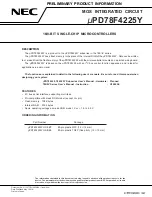
80
EB 8384-5 EN
Adjusting the limit switch
The required switching function, i.e. whether
the output relay is to be picked up or re-
leased when the tag enters the field, must be
selected at the switching amplifier, if re-
quired.
Adjusting the switching point:
Note:
During adjustment or testing, the
switching point must always be ap
-
proached from mid-position (50 %).
To guarantee the switching under all ambient
conditions, adjust the switching point ap-
prox. 5 % before the mechanical stop (OPEN
– CLOSED).
For CLOSED position:
1.
Initialize the positioner.
2.
Move the valve to 5 % in the MAN mode
(see display).
3.
Adjust the tag at the yellow adjustment
screw (2) until the tag enters or leaves
the field and the switching amplifier re-
sponds.
You can measure the switching voltage
as an indicator.
Contact function:
−
Tag leaving the field > contact is closed.
−
Tag entering the field > contact is
opened.
For OPEN position:
1.
Initialize the positioner.
2.
Move the valve to 95 % in the MAN
mode (see display).
3.
Adjust the tag (1) at the yellow adjust-
ment screw (2) until the tag enters or
leaves the field of the proximity switch
(3).
You can measure the switching voltage
as an indicator.
Contact function:
−
Tag leaving the field > contact is closed.
−
Tag entering the field > contact is
opened.
9.1
Retrofitting an inductive
limit switch
Required retrofit kit:
Limit switch
Order no. 1400-7460
Note:
The same requirements apply to ret
-
rofitting an inductive limit switch as to
servicing the positioner. For explo-
sion-protected positioners, the re-
quirements in section 11(Servicing
explosion-protected devices) need to
be kept. Check the "Limit switch, in
-
ductive" box on the nameplate after
installing the limit switch.
1.
Take off the rotary pushbutton (3) and cap
(1), unthread the five fastening screws (2)
and lift off the plastic cover (9) together
with the display,
taking care not to dam
-
Summary of Contents for FOUNDATION 3730-5
Page 106: ...106 EB 8384 5 EN...
Page 107: ...EB 8384 5 EN 107...
Page 108: ...108 EB 8384 5 EN...
Page 109: ...EB 8384 5 EN 109...
Page 110: ...110 EB 8384 5 EN...
Page 111: ...EB 8384 5 EN 111...
Page 112: ...112 EB 8384 5 EN...
Page 113: ...EB 8384 5 EN 113...
Page 114: ...114 EB 8384 5 EN...
Page 115: ...EB 8384 5 EN 115...
Page 116: ...116 EB 8384 5 EN...
Page 117: ...EB 8384 5 EN 117...
Page 118: ...118 EB 8384 5 EN...
Page 119: ...EB 8384 5 EN 119...
Page 120: ...120 EB 8384 5 EN...
Page 121: ...EB 8384 5 EN 121...
Page 122: ...122 EB 8384 5 EN...
Page 123: ...EB 8384 5 EN 123...
Page 124: ...124 EB 8384 5 EN...
Page 125: ...EB 8384 5 EN 125...
Page 126: ...126 EB 8384 5 EN...
Page 127: ...EB 8384 5 EN 127...
Page 128: ...128 EB 8384 5 EN...
Page 129: ...EB 8384 5 EN 129...
Page 130: ...130 EB 8384 5 EN...
Page 131: ...EB 8384 5 EN 131...
















































